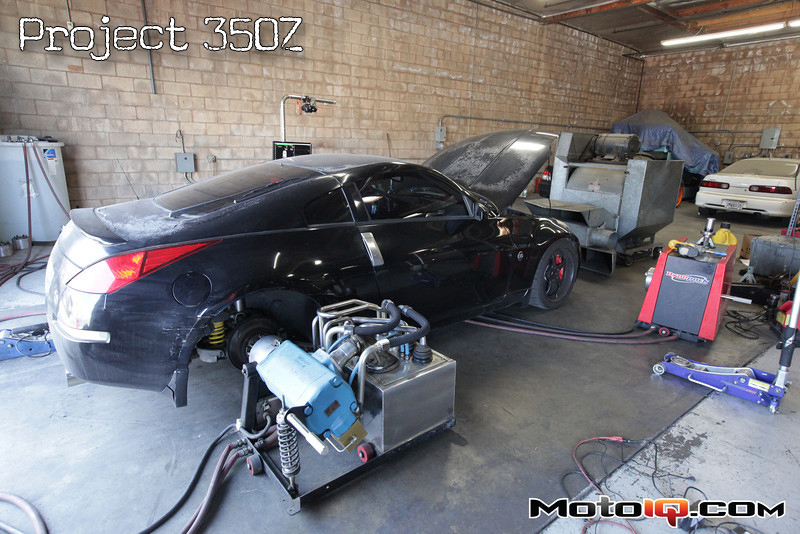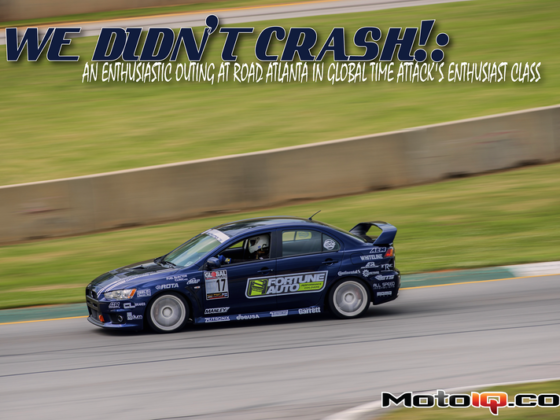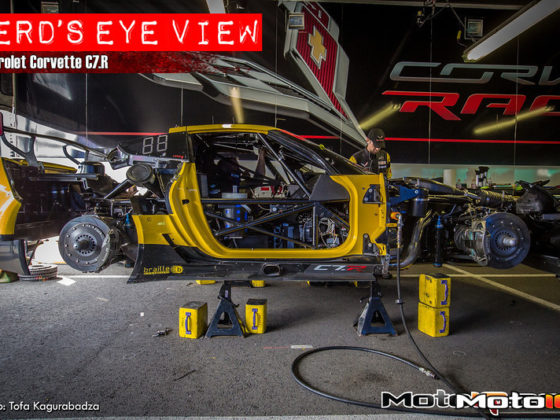
Project 350Z – ECU Tuning With Church Automotive and Up Rev
If you have been following the progress of Project 350Z as of late we have been testing and running the gamut of your typical bolt on performance parts to see what kind of gains could be expected for a well tuned but lightly modded VQ35DE. With an intake, exhaust, headers, intake manifold, cams and valve springs in place, it was time to get into the ECU and tune for our specific combination of parts.
The Nissan VQ35DE in early 350Z's runs off of a Mass Airflow Meter or MAF. MAF equipped cars typically are not as sensitive to bolt on parts changes as a MAP Sensor equipped Speed Density tuned cars. Mods make more airflow, the MAF picks this up and adds more fuel. However, especially in newer cars that are more sensitive and more highly tuned, these airflow changes might not sit as well and further tuning may be required.
To perform the final touches on Project 350Z we headed to Church Automotive Testing, a licensed UpRev Tuner to have our car dialed in.
Want to read more about our Project 350Z?
 The dyno at Church Automotive Testing is a Dynapack hub dyno. The car's hubs bolt directly to the dyno's power absorption units. Without a frictional loss due to tires and alignment, Dynapak dynos typically read higher than wheel dynos like the common Dynojet and our super conservative Superflow. Hub dynos are more sensitive and can load the car harder which makes them good for tuning. Engine cooling on the dyno is really important for consistent tuning and Church has this huge fan with a flow director that really rams the air into the front of the car.
The dyno at Church Automotive Testing is a Dynapack hub dyno. The car's hubs bolt directly to the dyno's power absorption units. Without a frictional loss due to tires and alignment, Dynapak dynos typically read higher than wheel dynos like the common Dynojet and our super conservative Superflow. Hub dynos are more sensitive and can load the car harder which makes them good for tuning. Engine cooling on the dyno is really important for consistent tuning and Church has this huge fan with a flow director that really rams the air into the front of the car. The man himself Shawn Church tuned Project 350Z personally and walked us through his VQ35DE tuning methodology. For late model Nissans, Shawn uses Up Rev's Osiris tuning software to reflash the stock ECU. Osiris allow user tuneabilty for all the functions of the stock ECU, enough to tune even wildly modded engine. Osiris features the ability to manipulate these items: Up to 5 Maps on cruise control equipped vehicles, Idle RPM, Speed Limiter, Electronic Throttle Control to achieve Wide Open Throttle at all speeds, Rev Limiter, DTC disable, AFR Targets, Fuel Compensation, Ignition Timing Advance, Cam Phasing for equipped vehicles, MAF transfer function, Cranking Enrichment and Ignition Advance, Injector Latency, K Fuel Multiplier and Intake Temp, Calculated Load vs. RPM, Minimum Effective Injector Pulse Width. After establishing a baseline, Shawn noted that Project Z was running really lean, leaner than 15:1 in many places. Shawn told us this was typical for a bolt on 350Z. As a warning this amount of leanness is not good for your engine. We certainly would have had trouble if we did a track day with our car running this lean. This mean that all of you Z owners out there sporting bolt ons, you better check those AFR's!
The man himself Shawn Church tuned Project 350Z personally and walked us through his VQ35DE tuning methodology. For late model Nissans, Shawn uses Up Rev's Osiris tuning software to reflash the stock ECU. Osiris allow user tuneabilty for all the functions of the stock ECU, enough to tune even wildly modded engine. Osiris features the ability to manipulate these items: Up to 5 Maps on cruise control equipped vehicles, Idle RPM, Speed Limiter, Electronic Throttle Control to achieve Wide Open Throttle at all speeds, Rev Limiter, DTC disable, AFR Targets, Fuel Compensation, Ignition Timing Advance, Cam Phasing for equipped vehicles, MAF transfer function, Cranking Enrichment and Ignition Advance, Injector Latency, K Fuel Multiplier and Intake Temp, Calculated Load vs. RPM, Minimum Effective Injector Pulse Width. After establishing a baseline, Shawn noted that Project Z was running really lean, leaner than 15:1 in many places. Shawn told us this was typical for a bolt on 350Z. As a warning this amount of leanness is not good for your engine. We certainly would have had trouble if we did a track day with our car running this lean. This mean that all of you Z owners out there sporting bolt ons, you better check those AFR's! Shawn spent the next several pulls correcting the air fuel ratio. Our car was tuned so it would run around 12.8 or so in the mid range and lean out slightly to around 13:1 on top. This is way more appropriate for a NA motor. Once he corrected the AFR, Shawn then manually control the VQ35DE's intake cam advance and make sweeps of the the entire rev range in 5 degree increments to find the ideal cam timing for the entire rev range. Shawn also increased out rev limit from 6600 rpm to 7100 as we had been annoyingly banging off the rev limiter ever since the JWT cams greatly improved out high RPM breathing. Shawn did not recommend going higher even though our JWT valve spring will allow over 8000 rpm as the early VQ engines had weak rod bolts.
Shawn spent the next several pulls correcting the air fuel ratio. Our car was tuned so it would run around 12.8 or so in the mid range and lean out slightly to around 13:1 on top. This is way more appropriate for a NA motor. Once he corrected the AFR, Shawn then manually control the VQ35DE's intake cam advance and make sweeps of the the entire rev range in 5 degree increments to find the ideal cam timing for the entire rev range. Shawn also increased out rev limit from 6600 rpm to 7100 as we had been annoyingly banging off the rev limiter ever since the JWT cams greatly improved out high RPM breathing. Shawn did not recommend going higher even though our JWT valve spring will allow over 8000 rpm as the early VQ engines had weak rod bolts. By looking at the dyno chart after doing the sweeps, Shawn was able to build the cam control map for the JWT camshafts by looking where each point of cam degrees made the most power. Shawn says he can get more out of the later VQ's like the Rev Up and HR that feature cam control on the intake and exhaust cams. Shawn also says he could get as much as 10 more hp if we had no cats in our exhaust. Shawn says the cat brick causes a reflected wave that reduces the scavenging when he tries to give the cams more overlap via ECU tuning.
By looking at the dyno chart after doing the sweeps, Shawn was able to build the cam control map for the JWT camshafts by looking where each point of cam degrees made the most power. Shawn says he can get more out of the later VQ's like the Rev Up and HR that feature cam control on the intake and exhaust cams. Shawn also says he could get as much as 10 more hp if we had no cats in our exhaust. Shawn says the cat brick causes a reflected wave that reduces the scavenging when he tries to give the cams more overlap via ECU tuning.


